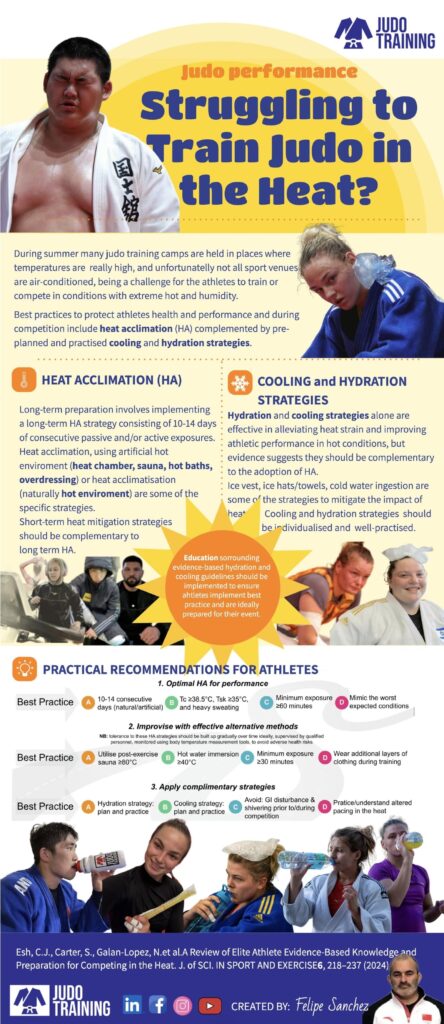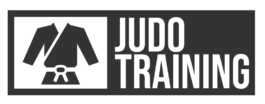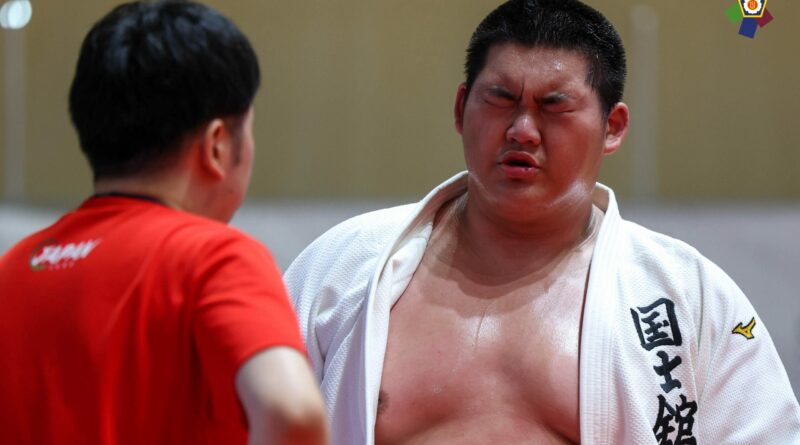Struggling to Train in the Heat?
During summer many judo training camps are held in places where temperatures are really high, and unfortunatelly not all sport venues are are air-conditioned, being a challenge for the athletes to train or compete in conditions with extreme hot and humidity. But, do they coaches prepare the athletes for training or competing in the heat?
Today we want to share this review article written by Esh et al. (2024) about the athlete evidence-based knowledge and preparation for competing in the heat. We believed will be useful reading for coaches who want to prepare better their athletes for the upcoming training camps this summer.
By being prepared, acclimatizing to heat and having a plan to keep cool, smart athletes carry an advantage over competitors who are less considerate. Training and competing in the heat can be tough; however, we all face the same conditions on training/competiton day. By being prepared, intelligently acclimating to the heat beforehand, and having a plan to keep cool, smart athletes will be able to manage heat better and will carry an advantage over competitors who are less thorough.



- Some of strategies (cool vests, ice hats or hydration) used by judo athletes to mitigate the heat during training camps (Pependal Training Camp 2022)
Esh, C.J., Carter, S., Galan-Lopez, N. et al. A Review of Elite Athlete Evidence-Based Knowledge and Preparation for Competing in the Heat. J. of SCI. IN SPORT AND EXERCISE (2024).

ABSTRACT
Elite athletes will compete in extreme heat more frequently as global land and sea temperatures increase, alongside more intense, frequent and longer duration heatwaves. Best practices to protect athlete health and performance during competition include heat acclimation/acclimatisation [(HA); i.e., long-term pre-competition preparation] complemented by pre-planned and practised cooling and hydration strategies (i.e., short-term interventions immediately before or during competition). This review explores elite athletes’ current behaviours and practices when preparing for competition in the heat and assesses the level of knowledge that has been exhibited by athletes and their practitioners in this space. Recommendations for future research, discussions of current best practices, and methods to improve translation of research into practice are provided. Available research focuses on small samples of elite endurance athletes during a selection of World Championship/Olympic/Paralympic events (~6% of competing athletes). While generally an increase in the adoption of evidence-based HA is seen chronologically from 2015 onwards, universal adoption is not seen. HA adoption is lowest in those who live/train in cold/temperate environments with cost and access to facilities/equipment being the most commonly reported barriers. Further research is required across the sporting landscape to fully characterise elite athlete behaviours and practices in these spaces. International federations and national governing bodies should continue their efforts to educate athletes and focus on regularly updated and reinvigorated release of evidence-based guidelines (in multiple germane languages) for competing in the heat, to increase the adoption of HA and other heat related best practice.
Download the full article HERE.

Check out also our previous articles related to this topic:
Pictures: EJU

